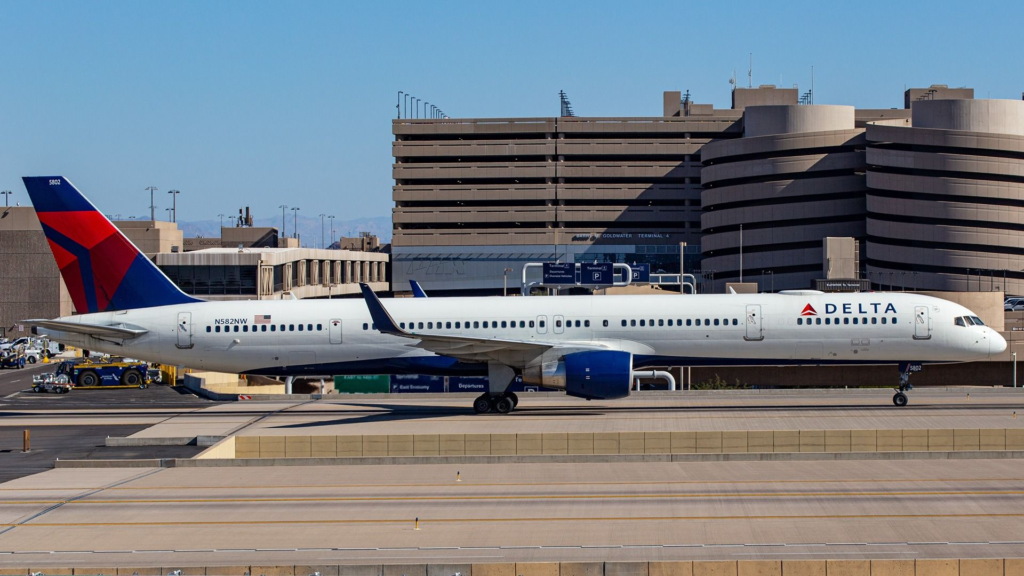The National Transportation Safety Board (NTSB) has released its final report on the aborted takeoff of a Delta Air Lines Boeing 757-300 at Hartsfield-Jackson Atlanta International Airport (ATL) on January 10, 2025. The takeoff was aborted due to a failure of engine number two.
Following the rejected takeoff, the captain requested Aircraft Rescue and Fire Fighting (ARFF) assistance, and the crew initiated the engine failure checklist. NTSB investigators later learned that an airport operations vehicle reported flames coming from the right engine, even though the cockpit showed no indication of an engine fire.
A Closer Look Into The Rejected Takeoff
A Delta Air Lines Boeing 757-300 aircraft, registered as N589NW, operating flight DL2668 from Atlanta Hartsfield-Jackson International Airport (ATL) to Minneapolis Saint Paul International Airport (MSP), when the flight crew decided to abort take-off due to an engine failure. It is worth noting that the aircraft in question is Delta’s 22.7-year-old Boeing 757-300 narrowbody, capable of accommodating a total of 234 passengers in a three-class cabin layout: 24 in business class, 32 in economy plus, and 178 in economy class, as per ch-aviation data.
As a result of the aborted take-off, passengers on the flight were forced to evacuate the Boeing 757 aircraft via emergency slides. The evacuation began after an airport operations vehicle reported flames from the right engine, even though the cockpit showed no signs of fire. Passengers also informed the flight attendants of a fire near the right engine.
While the crew continued the engine shutdown checklist, flight attendants reported the visible fire on the wing to the cockpit. The captain then started the evacuation checklist and ordered an evacuation. One passenger sustained a serious injury, a compression fracture of a vertebra, while seven other passengers suffered minor injuries during the evacuation, according to the final report.
Two Deicing Treatments Before Takeoff
Before departure for Minneapolis (MSP), the
The aircraft received Type I and Type IV deicing fluids, but ice reaccumulated, requiring a second deicing. After the second treatment, both engines were shut down and inspected, and the de-ice crew confirmed the aircraft and engines were clear. The engines were then restarted.
The aircraft taxied to Runway 9L and was cleared for takeoff. During the takeoff roll, at about 100 knots, the captain noticed a directional control problem and decided to abort. The first officer informed air traffic control, and the aircraft was brought to a stop with the parking brake set.
More About Rejected Takeoffs
While they are not common, much like go-arounds, aborted take-offs may have to be performed from time to time. An aborted take-off is when an aircraft begins accelerating down the runway in order to take off. However, due to a variety of reasons, the aircraft brakes and comes to a halt before reaching the end of the runway.
There are several different reasons why a pilot may choose to abort a take-off. These can range from engine problems to something just not feeling quite right, and even unexpected traffic within close proximity. After all, it is better to be safe and to err on the side of caution.
In most cases, the aircraft will have to return to the gate for checks after a rejected take-off, depending on why the take-off was aborted. However, if an aircraft has had to brake particularly hard, the brakes can get hot. This can result in the brake needing to cool down before a second attempt.


